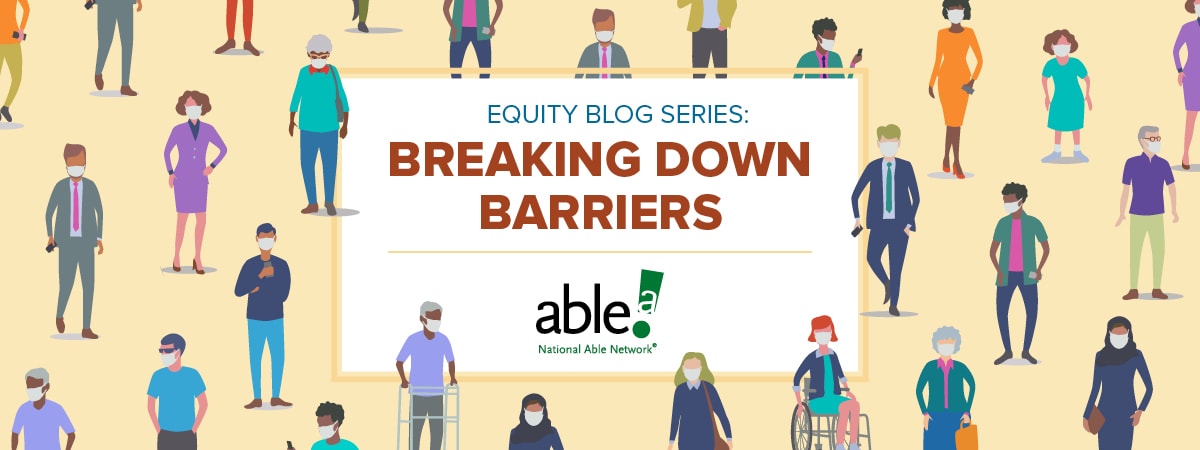In a hurricane, or any natural disaster, people who can evacuate, do. People who can’t have no choice but to face the impending unknown. These people are then looked down upon and criticized with comments like, “why didn’t you listen to the warnings?” Warnings mean nothing when you don’t have the money to pay for gas, or a hotel to get away from danger.
In the same way, like any crisis, the pandemic highlighted the gaps in our social safety net. Wealthy people escaped to second homes. Some people worked from home. But many couldn’t. Instead, they worked in meat packing plants where supervisors took bets on who would get COVID-19. Or grocery stores where they had no sick pay and had to work or lose their wages. Or nursing homes where the coronavirus raged out of control. Or they lost their jobs completely when whole industries shut down.
During this time National Able Network took our analysis of the barriers to equity and put it into action. We removed antiquated and overwhelming testing requirements for people with non-traditional education. We shifted our entire training to be self-service without adding additional barriers. We built an internal professional development website around equity, and from the success of that initiative, we created a webpage for anyone interested in learning along with us. And we created (with help from the State of Illinois) a digital divide training program to get computers and digital literacy training to those most in need during the pandemic.
It’s not enough. Not nearly enough.
The federal workforce system has barriers to those most in need written into legislation and Department of Labor policy. The system is built on making job seekers jump over obstacles to get help, from performance requirements and “suitability” assessments that encourage providers to overlook those most in need, to eligibility requirements that would make the most resilient job seeker throw up their hands in frustration, to antiquated rules that make it impossible to provide a computer to a job seeker without one. National Able Network and many of our partners are committed to identifying and breaking down these barriers so that our workforce system works for all of us.

